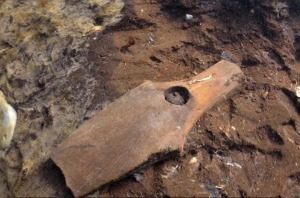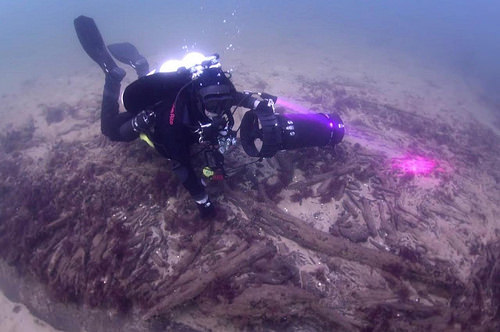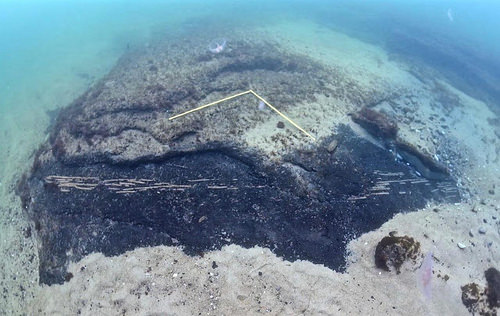
LUND UNIVERSITY—Seven years ago divers discovered the oldest known stationary fish traps in northern Europe off the coast of southern Sweden. Since then, researchers at Lund University in Sweden have uncovered an exceptionally well-preserved Stone Age site. They now believe the location was a lagoon environment where Mesolithic humans lived during parts of the year.
Other spectacular finds include a 9,000 year-old pick axe made out of elk antlers. The discoveries indicate mass fishing and therefore a semi-permanent settlement.
“As geologists, we want to recreate this area and understand how it looked. Was it warm or cold? How did the environment change over time?” says Anton Hansson, PhD student in Quaternary geology at Lund University.
Changes in the sea level have allowed the findings to be preserved deep below the surface of Hanö Bay in the Baltic Sea.
The researchers have drilled into the seabed and radiocarbon dated the core, as well as examined pollen and diatoms. They have also produced a bathymetrical map that reveals depth variations.
__________________________________________
The underwater site was once a lagoon about 9,000 years ago. Still screen shot from video, shown below.
___________________________________________
Mesolithic period fishtraps found at the site. Still screen shot from video, shown below.
___________________________________________________
A 9,000-year-old pick axe made out of elk antlers, found at the site. Still screen shot from video, shown below.
____________________________________________________
“These sites have been known, but only through scattered finds. We now have the technology for more detailed interpretations of the landscape”, says Anton Hansson.
“If you want to fully understand how humans dispersed from Africa, and their way of life, we also have to find all their settlements. Quite a few of these are currently underwater, since the sea level is higher today than during the last glaciation. Humans have always prefered coastal sites”, concludes Hansson.
Source: Lund University press release.
________________________________________________________
________________________________________________________

______________________________________________
Travel and learn with Far Horizons.
____________________________________________
This richly illustrated issue includes the following stories: Recent findings shedding new light on the whereabouts of the remains of Philip of Macedon, father of Alexander the Great; how an archaeologist-sculptor is bringing bones of the dead back to life; archaeologists uncovering town life at the dawn of civilization; an exclusive interview with internationally acclaimed archaeologist James M. Adovasio about what makes the Meadowcroft Rockshelter prominent in the ongoing search for the first Americans; what archaeologists are finding at the site of the ancient city of Gath, the home town of the biblical Philistine giant, Goliath; and how scientists are redrawing the picture of human evolution in Europe. Find it on Amazon.com.










